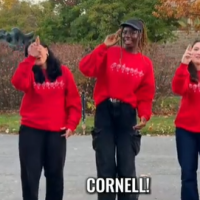When we learn to read, we say one word at a time. But how does the brain actually put words together when we read full sentences?
An international team of researchers, including a Cornell cognitive scientist, reports physiological evidence showing how the brain combines words into phrases in real time during reading.
“Phrase structure indeed appears as a major determinant of the dynamic profile of brain activity in language areas,” they wrote.
The finding supports a concept that’s been at the heart of psycholinguistics since the 1960s. The research is described in the April 17 issue of the Proceedings of the National Academy of Sciences (PNAS).
“Up until now, we’ve never had such direct evidence for phrase structure as it relates to language understanding,” said co-author John T. Hale, associate professor of linguistics in the College of Arts and Sciences.
The new findings also support the theory that people anticipate what words or phrases might be coming next, given what they’ve just heard, Hale added. However, the work indicates that activity in the brain’s language areas cannot be reduced solely to predictability effects, as some theorists have argued.
The team of French and American researchers recorded the brain’s activity in the language areas of the left hemisphere as a dozen study volunteers read simple sentences. The participants, who all have epilepsy, had electrodes inserted into their brains just prior to surgical treatment for their disorder. This enabled the researchers to see instantaneously the parts of the brain that were activated, when and for how long, as a person processed the sentences.
The patients read sentences three to 10 words long, such as “Bill Gates slept in Paris,” presented one word at a time in their native language, either English or French.
The research team found that the brain fired with each successive word, but, significantly, the brain activity dropped off suddenly whenever words could be merged into a phrase.
As people read words one by one, they must retain those words in short-term memory until they can make sense of the words as a unit, Hale said. “The maintenance of these memories is a reason that we think brain activity might be high at certain times,” he said. Once a complete phrase emerges, “you can merge all of those memories together into one phrase. And you no longer have to remember it. So, the activity drops off.”
The researchers compared the patterns of brain activity with several theoretical models of word-by-word parsing. The best-fitting models included an action that merges multiple words together into a phrase, whenever that would be grammatically possible.
“We related those intracranial signals to linguistically-plausible models of how comprehension might actually work. That’s what had not been done before. These models give us a sense of what those signals might mean,” Hale said.
The research team included Matthew Nelson, Christophe Pallier and Stanislas Dehaene of the NeuroSpin Center in France; Imen El Karoui, Laurent Cohen and Lionel Naccache of the French National Center for Medical Research; Kristof Giber and Sydney Cash of Harvard Medical School; Xiaofang Yang of Stanford University; and Hilda Koopman of University of California, Los Angeles.
This article originally appeared in the Cornell Chronicle.






